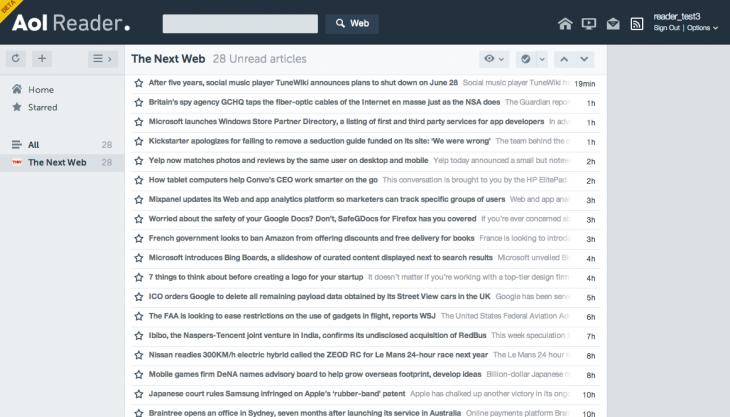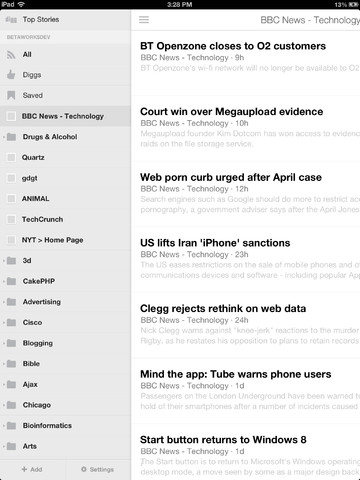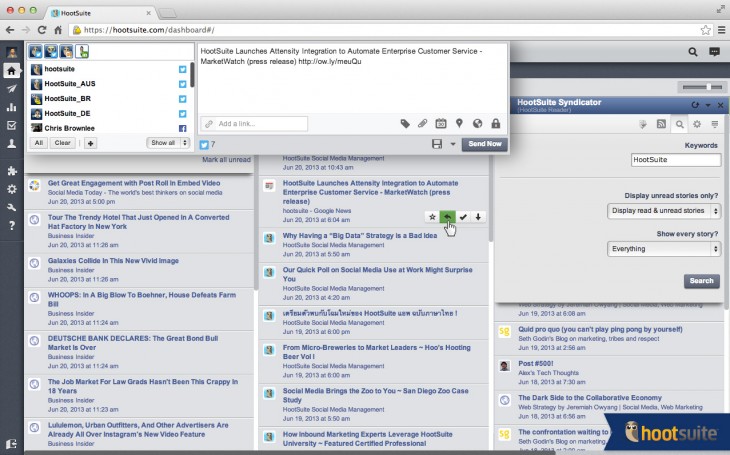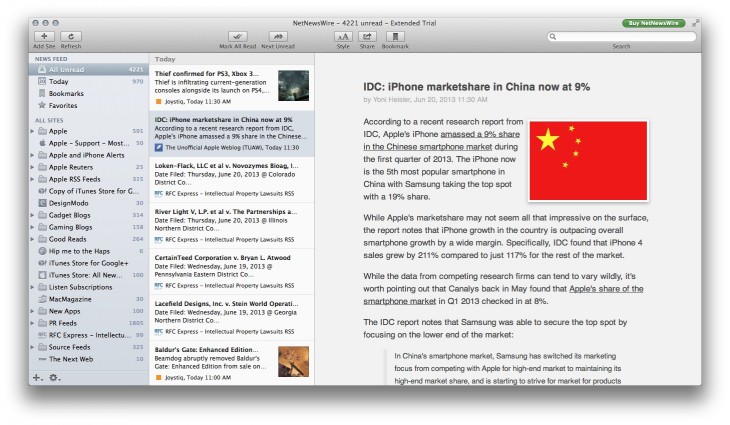
In case you forgot, Google is cutting off service on its RSS reader product on July 1. If you’re one of the remaining few that’s still using Google Reader, time’s running out for you to back up your feeds and find a replacement.
Here’s what you need to know.
Google announced the decision to sunset Reader back in March during a spring cleaning. It still baffles me that Google, you know, the world’s largest advertising agency by some accounts, gave up on fitting Reader into its revenue stream, but that’s a useless discussion at this point.
Reader first appeared in 2005. At the time, creator Chris Wetherell (who is now working on the Avocado app for couples) said:
Reader is using Google’s BigTable in order to create a haven for what is likely to be a massive trove of items.
It’s time to say goodbye to your haven. Here’s how to preserve your data from Reader: Follow this custom link to Google’s Takeout data export service. Alternatively, you can navigate to google.com/takeout, click the select services tab and then select Reader as the service you want to export.
Your subscription data will be exported as an XML file and separate JSON files will be created with the following information:
- List of people that you follow
- List of people that follow you
- Items you have starred
- Items you have liked
- Items you have shared
- Items shared by people you follow
- Notes you have created
- Items with comments
Though the Reader service will shut down on July 1, you should have until July 15 to grab your data.
Alternatives
Reader’s departure may be a sad occasion, but plenty of other services have stepped up to keep you and your feeds company. Here are a few alternatives (in alphabetical order):
AOL
AOL’s reader launched in beta earlier this week. We took a look at it and found it to be a solid start, albeit an unexciting one.
The service contains your standard feed and single article views, as well as the requisite social sharing, tagging and read-it-later support. AOL has also built an API for third-party developers to submit their own apps.
Digg
At the time of writing, the Web version of Digg Reader is still listed as “almost ready”, but it will have keyboard shortcuts, list and expanded view, support for Instapaper, Pocket and Readability, and social sharing when it arrives.
If you’re champing at the bit, the iOS version of the Digg app has a beta release of new RSS features. An Android app is scheduled for release before the end of July.
Digg Reader’s going to be fairly barebones at first, but upcoming features include search, “View Only Unread” and “Mark As Unread” commands, IFTTT integration and better filtering and sorting options. Apparently it’s also going to get “Uber for cronuts.” Their words, not mine.
Feedly
The new Feedly Cloud includes one-click Google Reader importing. The service will act as the backend for several other products, including IFTTT, NextGen, Reeder. Those partners cover a broad set of platforms, including Windows 8, Windows Phone, iOS, Android, BlackBerry and Symbian.
Feedly has been growing in popularity, swelling from 4 million users in March to over 12 million at the end of May. Presumably, they have Google to thank for that.
You can use Feedly’s own instance of its service as a standalone Web product, iOS and Android app.
Hootsuite
Earlier this week, Hootsuite released Syndicator, an RSS feed aggregator designed for social media marketers. It’s not exactly meant to be a broad replacement for Google Reader, but it’s targeted at helping a specific use case, namely those who “under pressure to push content through social channels”
Syndicator is integrated with Hootsuite’s existing dashboard and the Hootlet Chrome extension makes it easy to subscribe to feeds while visiting publishers’ sites.
NetNewsWire
The long-lasting NetNewsWire is back with a new beta version for OS X just in time to see Reader off on its journey into the dark. It has all the base keyboard shortcuts and options that we need, but we’re looking forward to the upcoming iPhone and iPad versions and the custom-built syncing feature.
Twitter (via IFTTT)
Before you get too excited, there’s no official RSS reader for Twitter, but you can use IFTT to cobble together a limited feed display. I use the RSS channel to trigger posts on single feeds (TNW, for example) and the Feedly channel for a whole category of RSS feeds and then have both recipes tweet to a protected Twitter account. Depending on how active your feeds are, you can either follow that account from your main Twitter profile or just look in on your dummy account as needed.
The setup is slow and clumsy, I know, but most of us have moved on to Twitter to get our news anyway. Isn’t that why we’re in this predicament to begin with?
Image credit: iStockphoto
Get the TNW newsletter
Get the most important tech news in your inbox each week.











